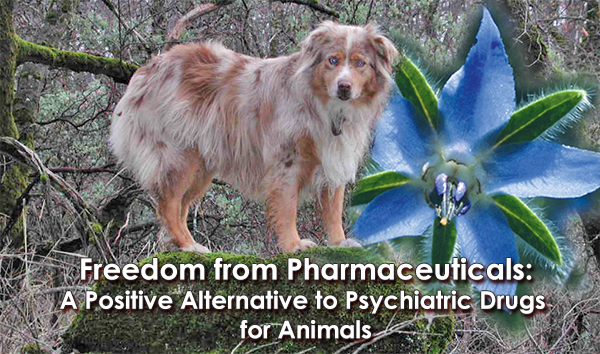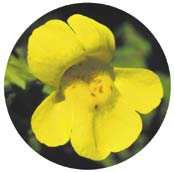|
Thomas – a journey from fear to adjustment in a new home: a case study from Kathy Edstrom Over the course of several months, Kathy worked with Dijana Popovic and her canine companion, Thomas. Thomas is a Labrador/German shepherd mix, adopted from a local animal shelter. Dijana contacted Kathy seeking help for Thomas’ behavior issues and was interested in finding an alternative to the drug therapy prescribed by Thomas’ veterinarian. A scientific researcher by profession, Dijana put her own skills to work on behalf of Thomas and discovered Kathy while searching the Flower Essence Society website. Dijana is hesitant to use chemical and allopathic methods to treat her pets, particularly for behavioral problems. Thomas was adopted from a small, local “low kill” shelter in Brooks, Alberta, Canada. At that time, he was approximately one year old and was “almost at the end of his welcome there,” according to Dijana. Thomas experienced behavioral problems from the start presumably because his pre-shelter home was with a reclusive couple and he was never socialized with other people or animals. He became anxious and overwhelmed in the presence of strangers and would often freeze in place, while at other times he would pace and whine. The behavior with others often escalated to barking and lunging, not only at new people but also at other dogs. At the time Thomas was adopted, Dijana already had another dog, Molly, living at her home. Molly did not like Thomas in the beginning and was jealous when he received attention. Molly received flower essences to assist with her possessive, attachment behavior that she had for Dijana. After a time, Molly and Thomas began to get along well inside the home but while training in the backyard, Thomas was unable to concentrate on training, his ears stood up at all times, with his tail between his legs; he was distracted and worried by everything in the environment.
Behavioral training and drug therapy Dijana enrolled Thomas in behavior training. The animal trainer suggested Dijana ask a veterinarian to prescribe a drug to mitigate Thomas’ behavior issues. Because Thomas’ anxiety and associated behavior was so uncontrollable when outside of the house, the trainer suggested that Thomas live as an ‘inside dog’ and have a treadmill for exercise. Dijana rejected that idea and finally agreed to seek medical/veterinary assistance. In April, Thomas’ veterinarian prescribed amitriptylene (often known as Elavil), an anti-anxiety drug designed for treatment of human “mental illness.” Through research, Dijana learned that amitriptyline would not help during training and that dogs, in fact, showed more aggressive displays after treatment. In conversation with Dijana, the trainer said that she had seen dogs respond best when on Prozac, when psychiatric drugs are a choice for helping with training. Dijana researched alternatives to the use of amitriptylene, and that is when she discovered Kathy Edstrom and contacted her. Kathy cautiously recommended that the veterinarian change Thomas’ drug, careful not to overstep her role in Thomas’ treatment. The veterinarian reluctantly changed the prescription from amitriptylene to Prozac, with the proviso that Thomas remain on it for a minimum of three months. Prozac is an off-label drug often used with dogs for anxiety and aggression (more appropriately termed defensive/reactive behavior). Some reports now show that dogs on Prozac are not only responding worse behaviorally, but those who were not previously aggressive display aggressive and agitated behaviors. While on Prozac, Thomas still did not want to approach other people and animals. Kathy recommended a mix of flower essences for Thomas to use while still taking Prozac, to help focus on emotional shifts. Although it was more challenging to recognize changes in his behavior due to the drug’s impact, improvements were observed. Transition to Flower Essence Therapy – a Healing Journey Thomas did not like the essences administered directly into his mouth. Instead, Dijana uses a slice of cheese formed into a little “bowl” and puts the drops into it, which Thomas accepts. Six drops of the flower essence blend is administered 3-4 times daily. His blend is comprised of:Aspen – because Thomas was not socialized properly and was not exposed to many things that most dogs are exposed to during the first year of life; he had experienced limitations and developed many fears, some of which were unknown Larch – to help with confidence issues, thus to become less fearful of new people and other dogs Mimulus – also to address fear issues, helping him to cope in the “real” world Rock Rose – to address early trauma which likely caused him to act-out problematically Vervain – because Thomas was described as a high-energy dog with a tendency to run along the fence, anxiously barking Kathy says: “ Aspen, Mimulus and Rock Rose are my three favorite and highly-used-with-success flower essences for helping animals work through any fear issues.”
Thomas remained on Prozac for four months (with one month weaning off the drug) and overlapped his treatment with flower essences for the last three of the four month period. He is now completely off and is taking only flower essences. Further update from Dijana:
Thomas is still not too keen on playing with other dogs, but is now more comfortable with socializing. He now enjoys participating in a Search and Rescue class, where he can put his improved focus and attention to work. Dijana continues to administer Thomas’ blend at least three times per day and has a very good, reward-based training program that she utilizes to teach Thomas acceptable behaviors. With each passing week, Dijana continued to see the positive progress he was making while receiving flower essences. |

To install this Web App in your iPhone/iPad press ![]() and then Add to Home Screen.
and then Add to Home Screen.





 “The biggest difference that I (and all the other people who interacted with Thomas) noticed once he was completely off Prozac was his affection; all of a sudden he just started to ask for pats from everyone and once you started petting him, he'd just try to get closer and closer and you could see that he just loved it…. Also, his reactions to seeing other dogs from the car or when on leash have calmed down considerably, particularly in the last month, to the point where he no longer barks or lunges at all. I think this definitely has to do with the essences taking over his brain from Prozac, because we have not done too much training lately…I definitely would agree that Prozac was not necessary in this case and I would have probably had bigger progress with just the essences and a training pace that was more suited to Thomas…”
“The biggest difference that I (and all the other people who interacted with Thomas) noticed once he was completely off Prozac was his affection; all of a sudden he just started to ask for pats from everyone and once you started petting him, he'd just try to get closer and closer and you could see that he just loved it…. Also, his reactions to seeing other dogs from the car or when on leash have calmed down considerably, particularly in the last month, to the point where he no longer barks or lunges at all. I think this definitely has to do with the essences taking over his brain from Prozac, because we have not done too much training lately…I definitely would agree that Prozac was not necessary in this case and I would have probably had bigger progress with just the essences and a training pace that was more suited to Thomas…”
